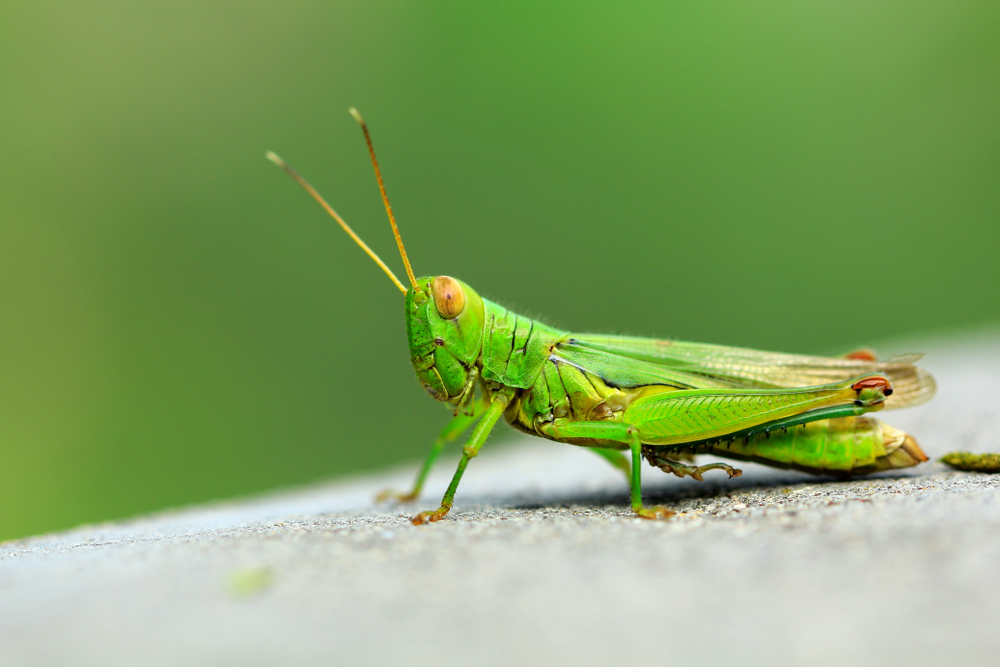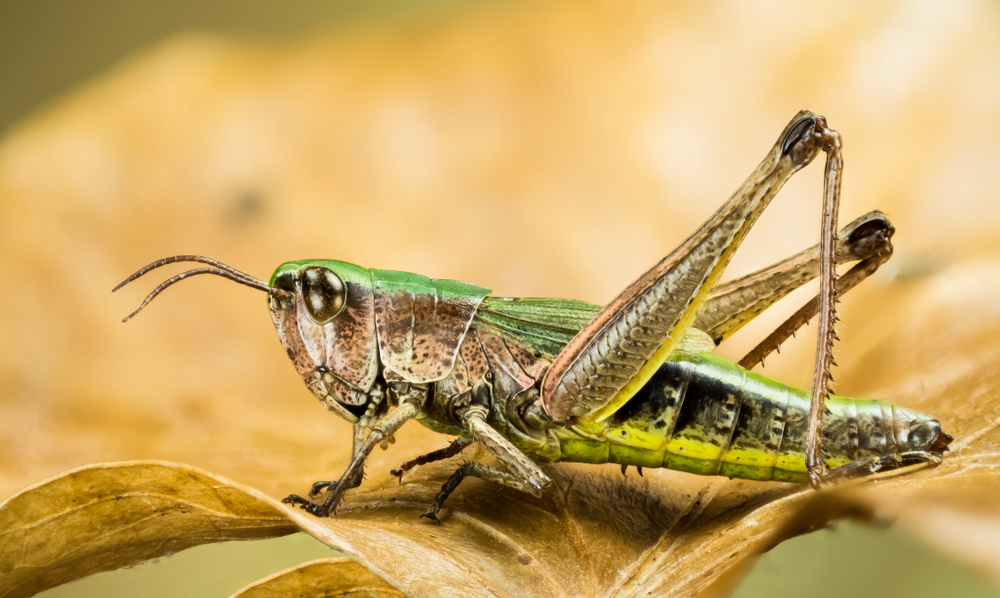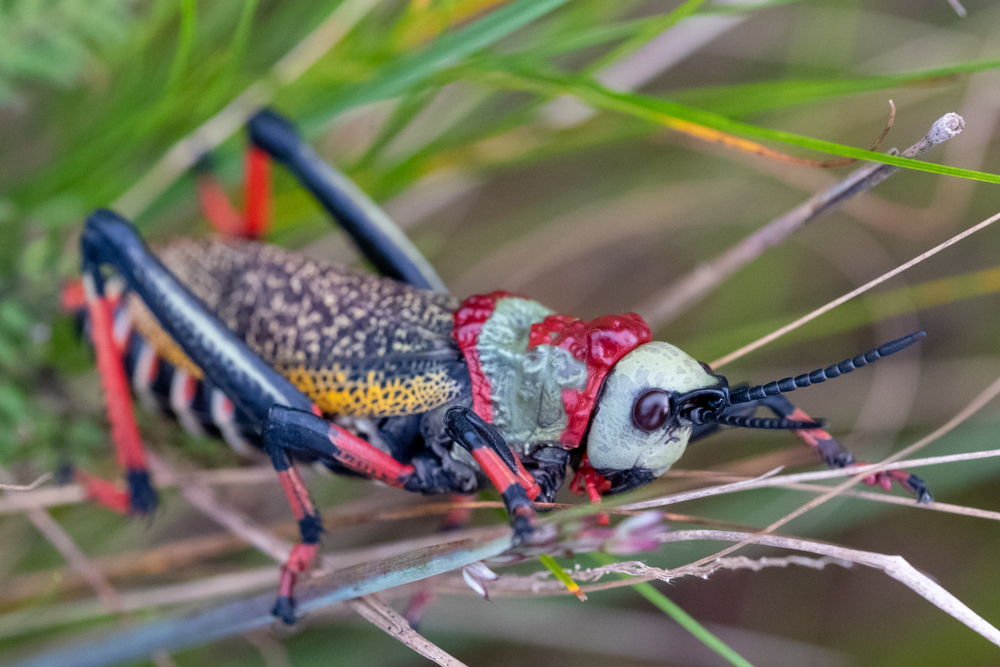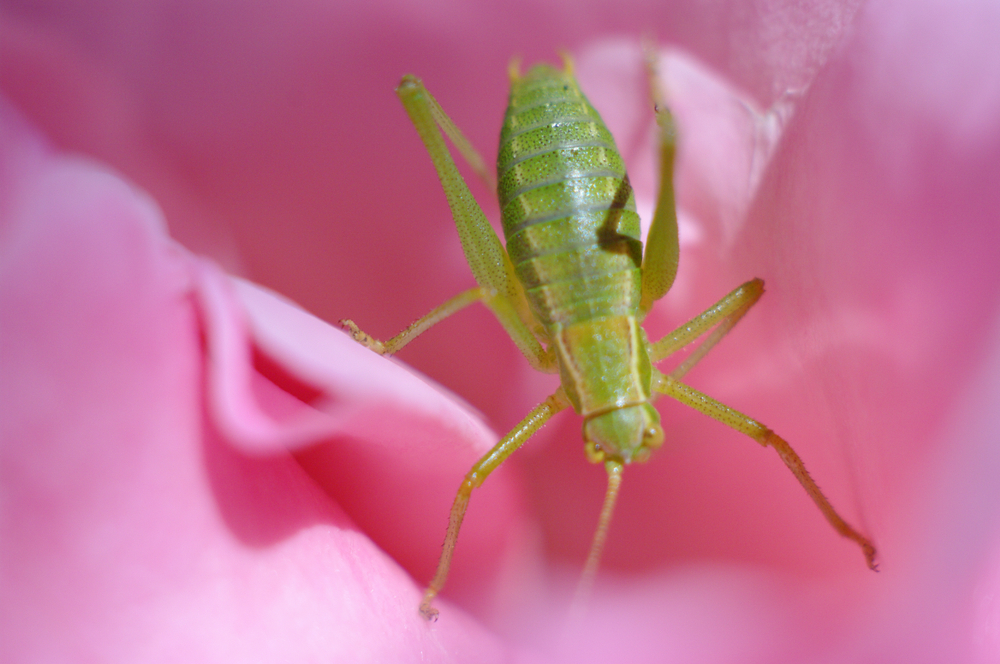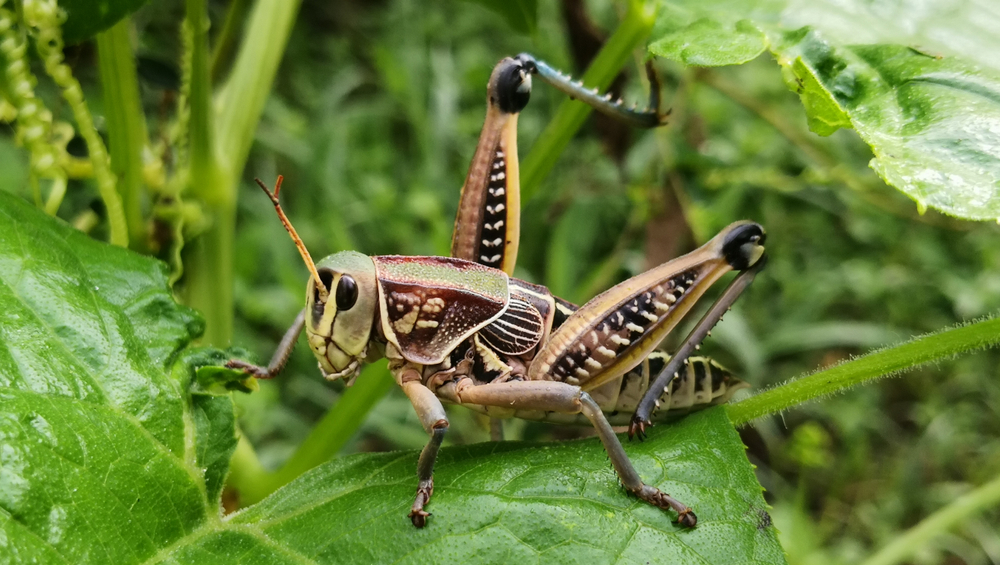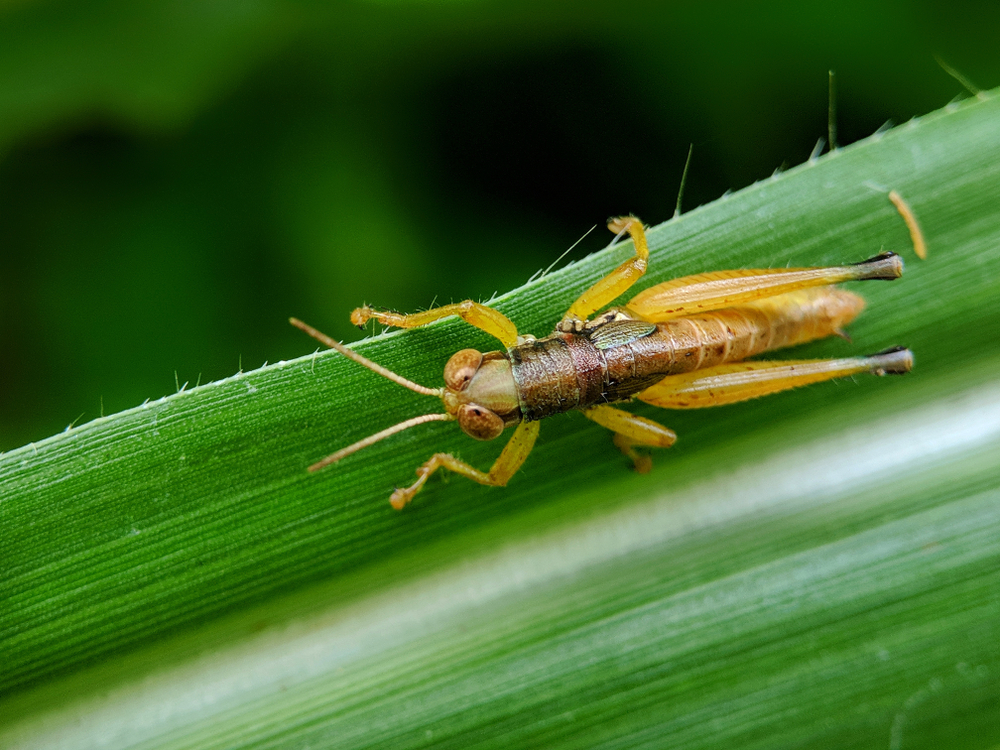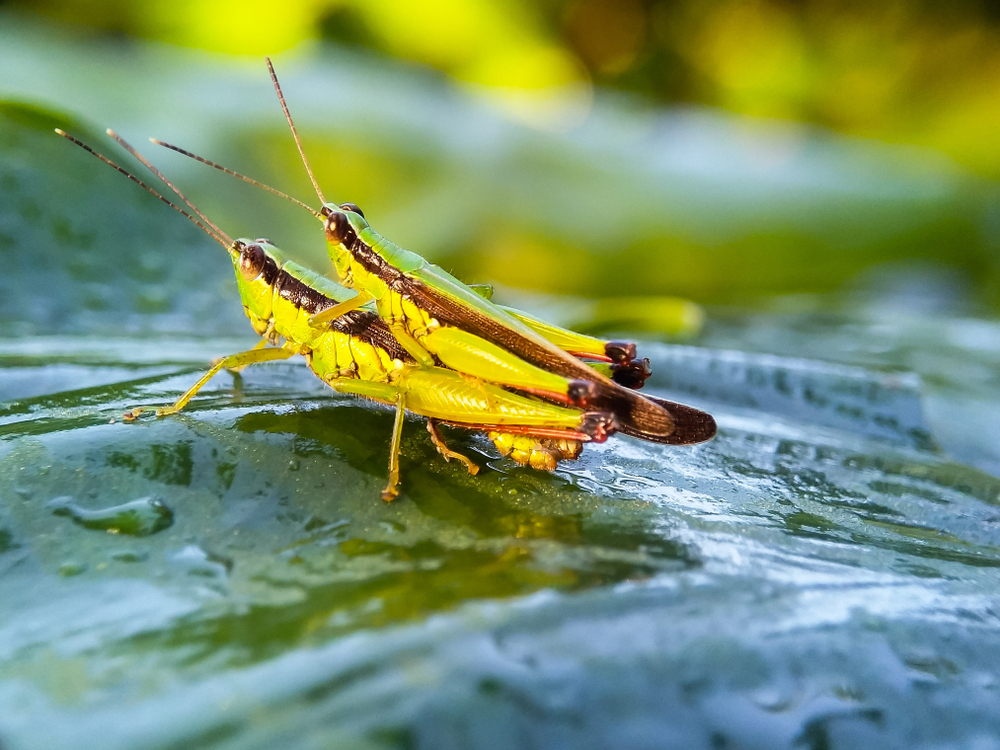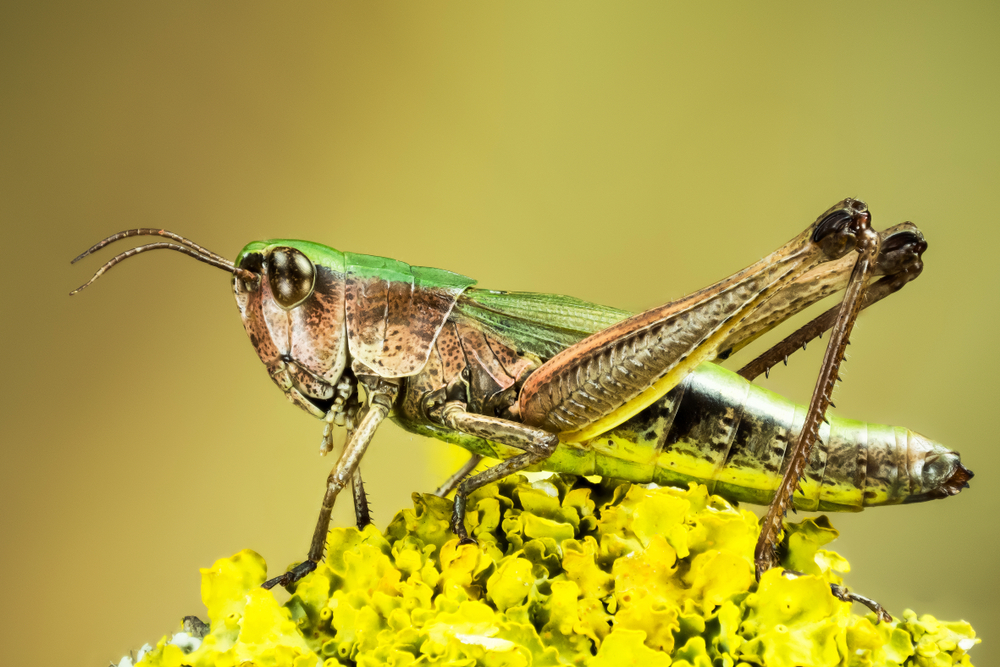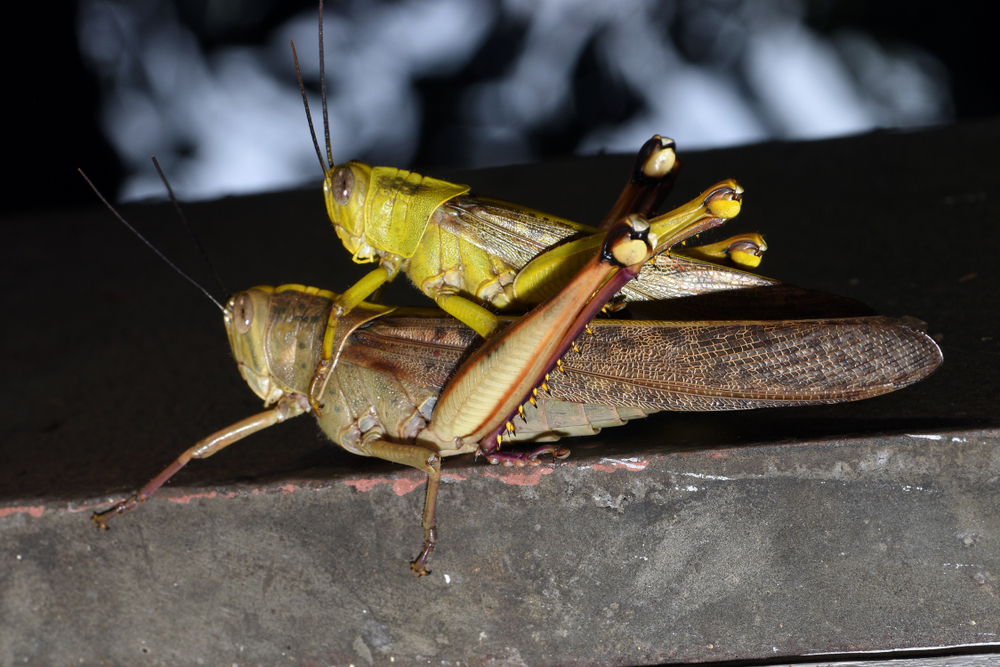Reproduction
Grasshoppers, like other insects, have a distinctive reproductive cycle characterized by several stages. Here’s an overview of the grasshopper’s reproductive cycle:
1. Courtship: The reproductive process begins with courtship. Male grasshoppers use various behaviors to attract females, including singing by stridulating (making sound) with their wings and antennae, displaying vibrant colors, and offering gifts of saliva or spermatophores (sperm packets). Courtship displays can vary among species.
2. Mating: Once a female is receptive to a male’s advances, mating occurs. The male transfers sperm to the female using specialized structures called claspers located at the tip of his abdomen. This transfer may involve the male mounting the female, known as copulation.
3. Egg-Laying: After mating, the female seeks suitable locations to lay her eggs. She uses her ovipositor, a specialized structure at the end of her abdomen, to insert eggs into the ground or other suitable substrates. The choice of egg-laying site can vary among species.
4. Egg Development: The eggs are deposited into the ground, where they undergo a period of development. This phase can be influenced by environmental conditions, including temperature and moisture.
5. Nymph Stage: When the eggs hatch, nymphs emerge. Nymphs are miniature versions of adult grasshoppers but lack fully developed wings and reproductive organs. They go through several instars (molting stages) as they grow and develop.
6. Metamorphosis: Grasshoppers undergo incomplete metamorphosis, meaning they do not have a pupal stage. Instead, nymphs gradually develop into adults through a series of molts. During the final molt, they acquire fully developed wings and reproductive organs.
Gestation Period: It’s important to note that grasshoppers do not have a gestation period like mammals. Instead, their reproductive cycle involves the laying of eggs, which develop externally. The time it takes for eggs to hatch and the nymphs to develop into adults can vary among species and environmental conditions.
Number of Offspring: The number of eggs laid by a female grasshopper can vary among species and individuals. Some females may lay dozens to hundreds of eggs during their reproductive lifetime.
Grasshoppers exhibit a wide range of reproductive strategies and behaviors, depending on the species and environmental factors. Their reproductive cycle is adapted to their ecological niche, and their ability to produce numerous offspring contributes to their role in ecosystems and population dynamics.



































































